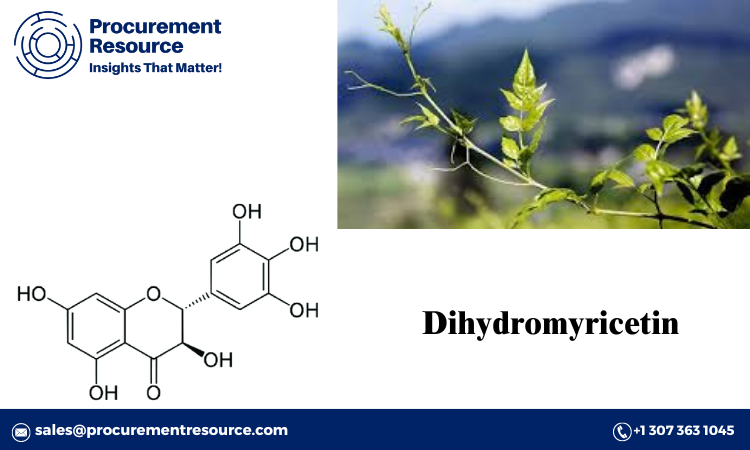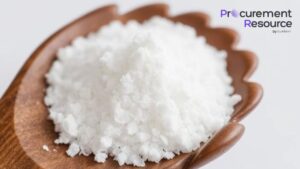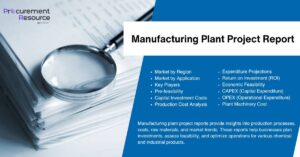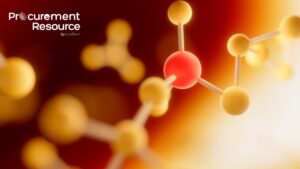
Dihydromyricetin (DHM), a flavonoid compound extracted primarily from the Hovenia dulcis plant, has garnered significant attention for its potential health benefits, particularly its purported ability to reduce alcohol intoxication and protect the liver. As consumer interest in natural health supplements grows, so does the demand for DHM. This report delves into the production of dihydromyricetin, examining the manufacturing processes, raw material costs, and the latest developments in the industry.
Manufacturing Report and Process
The production of Dihydromyricetin involves several stages, starting from the cultivation of the Hovenia dulcis plant to the extraction and purification of the DHM compound. Here is a detailed breakdown of the manufacturing process:
Request For Sample: https://www.procurementresource.com/production-cost-report-store/dihydromyricetin-dhm/request-sample
- Cultivation and Harvesting:
- Hovenia dulcis Plant: The primary source of DHM, Hovenia dulcis, is cultivated under specific conditions to ensure a high yield of the compound. The plant thrives in temperate climates and requires careful monitoring to prevent diseases and pests.
- Harvesting: The fruits of the Hovenia dulcis plant are harvested when they reach optimal ripeness, typically in late summer to early autumn. The timing of the harvest is crucial as it impacts the concentration of DHM in the fruit.
- Extraction Process:
- Preparation: The harvested fruits are cleaned and dried to reduce moisture content, which is necessary for the extraction process.
- Solvent Extraction: The dried fruits are subjected to solvent extraction, typically using ethanol or methanol, to dissolve the DHM. This step involves soaking the plant material in the solvent for a specific period, followed by filtration to separate the liquid extract from the solid residues.
- Purification:
- Concentration: The liquid extract is concentrated using evaporation techniques to remove the solvent and increase the concentration of DHM.
- Crystallization: The concentrated extract is then cooled to initiate crystallization, where DHM forms solid crystals. These crystals are separated from the remaining liquid through filtration.
- Drying: The DHM crystals are dried to remove any residual moisture, resulting in a pure powdered form of Dihydromyricetin.
- Quality Control:
- Testing: The final DHM product undergoes rigorous testing to ensure its purity and potency. Analytical techniques such as High-Performance Liquid Chromatography (HPLC) are used to verify the concentration of DHM in the product.
- Packaging: Once the quality standards are met, the DHM powder is packaged in airtight containers to preserve its stability and prevent contamination.
Raw Material Costs
The cost of raw materials plays a significant role in the overall production expenses of Dihydromyricetin. Here are some key factors influencing raw material costs:
- Hovenia dulcis Cultivation:
- Land and Labor: The cost of land for cultivation and labor for planting, maintaining, and harvesting the Hovenia dulcis plants can vary based on geographic location and local wage rates.
- Agricultural Inputs: Expenses for seeds, fertilizers, pesticides, and irrigation systems contribute to the overall cultivation costs.
- Harvesting and Processing:
- Equipment and Machinery: Investment in harvesting equipment, drying facilities, and extraction machinery is necessary for efficient processing. These initial capital costs can be substantial.
- Energy Costs: The extraction and purification processes require energy, primarily in the form of electricity or fuel, contributing to operational costs.
- Solvents and Chemicals:
- Extraction Solvents: The cost of solvents like ethanol or methanol used in the extraction process can fluctuate based on market prices and supply availability.
- Purification Chemicals: Additional chemicals used in the purification and crystallization steps add to the production expenses.
- Quality Control and Testing:
- Laboratory Equipment: Analytical equipment for quality testing, such as HPLC machines, represents a significant investment.
- Testing Reagents: Consumables and reagents used in quality control testing contribute to ongoing operational costs.
Latest News
The production and market dynamics of Dihydromyricetin are influenced by various factors, including scientific research, regulatory developments, and market trends. Here are some of the latest news and updates in the DHM industry:
- Scientific Advancements:
- Health Benefits: Ongoing research continues to explore the potential health benefits of Dihydromyricetin, particularly its role in reducing alcohol-induced liver damage, improving metabolic health, and acting as an antioxidant. Positive findings from these studies can drive increased consumer demand.
- New Applications: Researchers are investigating new applications of DHM, such as its potential use in skincare products and as an ingredient in functional foods and beverages. These developments could open up new market segments for DHM.
- Regulatory Changes:
- Dietary Supplement Regulations: Regulatory authorities in various countries are updating their guidelines for dietary supplements, impacting the production and marketing of DHM. Compliance with these regulations is crucial for market access.
- Quality Standards: Stricter quality standards for natural health products are being implemented to ensure consumer safety and product efficacy. Producers of DHM must adhere to these standards to maintain their market presence.
- Market Trends:
- Consumer Awareness: Increasing consumer awareness of the benefits of natural supplements is driving demand for products like Dihydromyricetin. Marketing efforts and educational campaigns are playing a significant role in this trend.
- Sustainability: There is a growing emphasis on sustainable and ethical sourcing of raw materials. Producers are adopting eco-friendly practices in the cultivation and extraction of Hovenia dulcis to meet consumer expectations for environmentally responsible products.
- Industry Collaborations:
- Partnerships: Collaborations between DHM producers, research institutions, and healthcare companies are fostering innovation and product development. These partnerships can lead to the creation of new DHM-based formulations and expanded market reach.
- Market Expansion:
- Global Reach: The demand for Dihydromyricetin is expanding beyond traditional markets, with increasing interest from consumers in North America, Europe, and Asia. Export opportunities are growing, presenting new avenues for revenue generation.
In conclusion, the production of Dihydromyricetin involves a complex and carefully controlled process, from the cultivation of Hovenia dulcis to the extraction and purification of the DHM compound. The costs associated with raw materials, coupled with advancements in scientific research and regulatory changes, shape the dynamics of the DHM market. As consumer interest in natural health supplements continues to rise, the industry is poised for growth, driven by innovation, sustainability, and expanding global demand.



